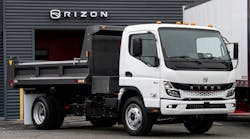The Innovation Center for the U.S. Dairy released two new web resource tools to help milk processors and transporters calculate their carbon footprint while also identifying opportunities for energy and financial savings.
Released in conjunction with Earth Day, the tools, along with the 2011 U.S. Dairy Sustainability Report, are designed help improve the carbon footprint of the dairy industry’s supply chain from farm to table.
“We’ve spent three years in the field gathering research to support our science- and practice-based approach to improving sustainability across the value chain — from growing crops to feed our dairy cows; to processing and manufacturing real, fresh, nutrient-rich dairy foods and beverages; through consumption and packaging disposal,” said Barbara O’Brien, president of the Innovation Center for U.S. Dairy. “The key learning we identified about dairy’s impacts and opportunities for improvement made these new resources possible.”
The Dairy Plant Smart tool allows fluid milk processing plants to evaluate overall energy use, including production, transport, refrigerant losses and packaging.
Dairy Fleet Smart helps transportation managers identify ways to more efficiently deliver milk from the production facility to storage or retail by completing a 360-deg. evaluation of fuel used. Adopting fuel-efficient best practices can save trucking companies a substantial amount in fuel costs, while also reducing emissions.
(Video: Discover ways transporters can reduce fuel use)
Both tools feature case studies and best practices along with calculators for benchmarking purposes.
As part of the U.S. Dairy Sustainability Commitment, Dairy Plant Smart and Dairy Fleet Smart aim to help the industry achieve a combined reduction of 705,457 metric tons of emissions and $108 million in annual business savings toward the voluntary industry-wide reduction goal.
“Resources like Dairy Plant Smart, Dairy Fleet Smart and the 2011 U.S. Dairy Sustainability Report provide verified information, common measures and best practices to help producers, processors, manufacturers, transporters and brands improve their economic, social and environmental sustainability,” said Jed Davis, director of sustainability at Cabot Creamery Cooperative.
Also, visitors to USDairy.com/sustainability have access to decision-making tools, including the SaveEnergy resource, which connects dairy farmers with financial assistance opportunities for farm energy audits and equipment upgrades.
The 2011 U.S. Dairy Sustainability Report details all that the dairy industry has done to date in support of sustainability goals. Some of those accomplishments are:
Engaging more than 830 stakeholders who invested approximately 6,700 working days, valued at more than $6.2 million, to support dairy sustainability efforts throughout the year.
Launching a new industrywide initiative to establish the Sustainability Measurement and Reporting Framework for U.S. Dairy.
Partnering with stakeholders in the inaugural U.S. Dairy Sustainability Awards program, which recognizes efforts that deliver outstanding benefit to business, community and the environment.
“Sustainability has become a key business strategy for the industry and its future development,” O’Brien said. “In addition to industry-level work, the Innovation Center built upon the findings of the GHG Life Cycle Assessment for Fluid Milk to develop and test a suite of measurement tools, two of which we are excited to launch today. These tools help dairy farms and businesses adopt sustainable practices that improve their environmental performance and positively impact their bottom line.”


